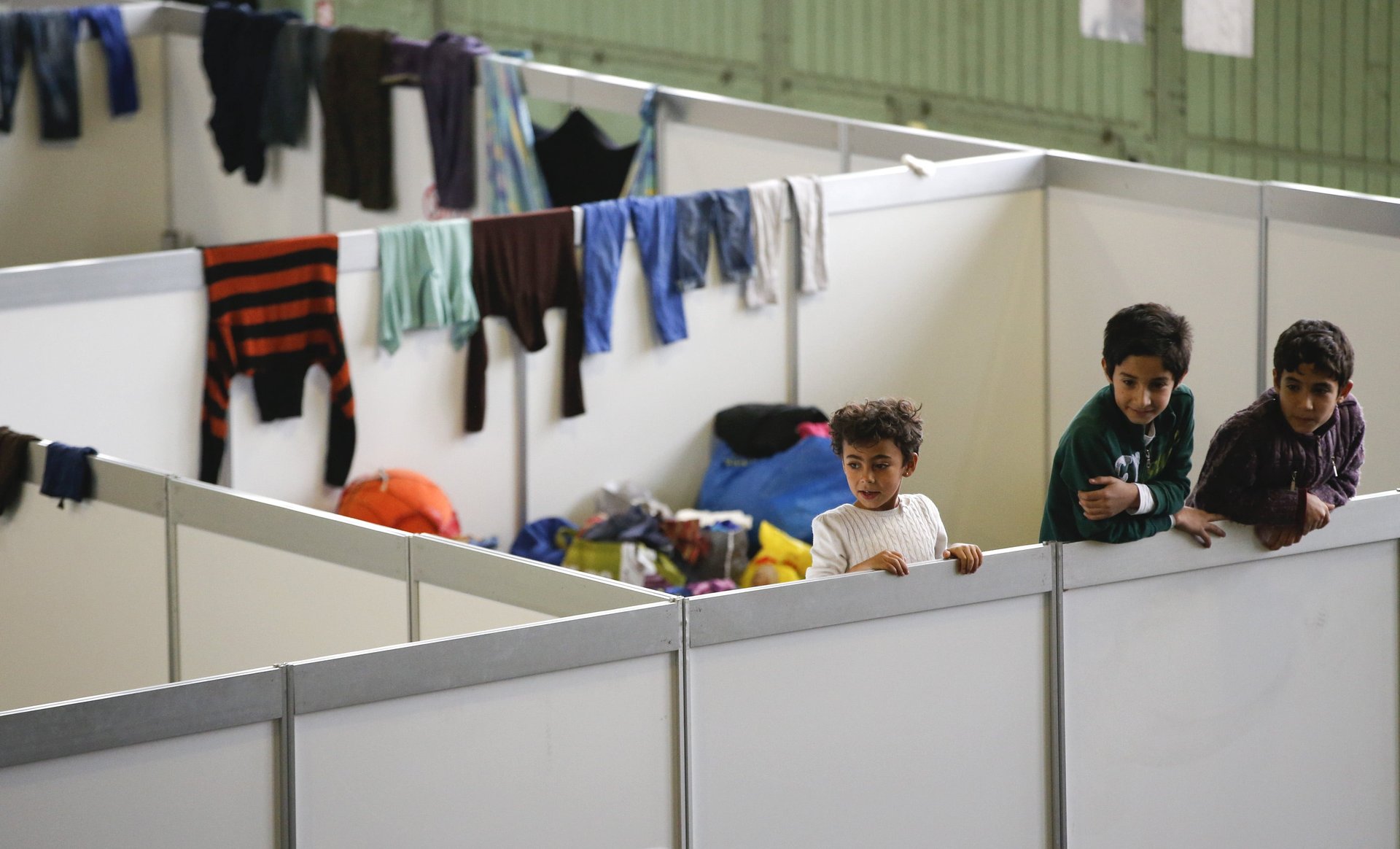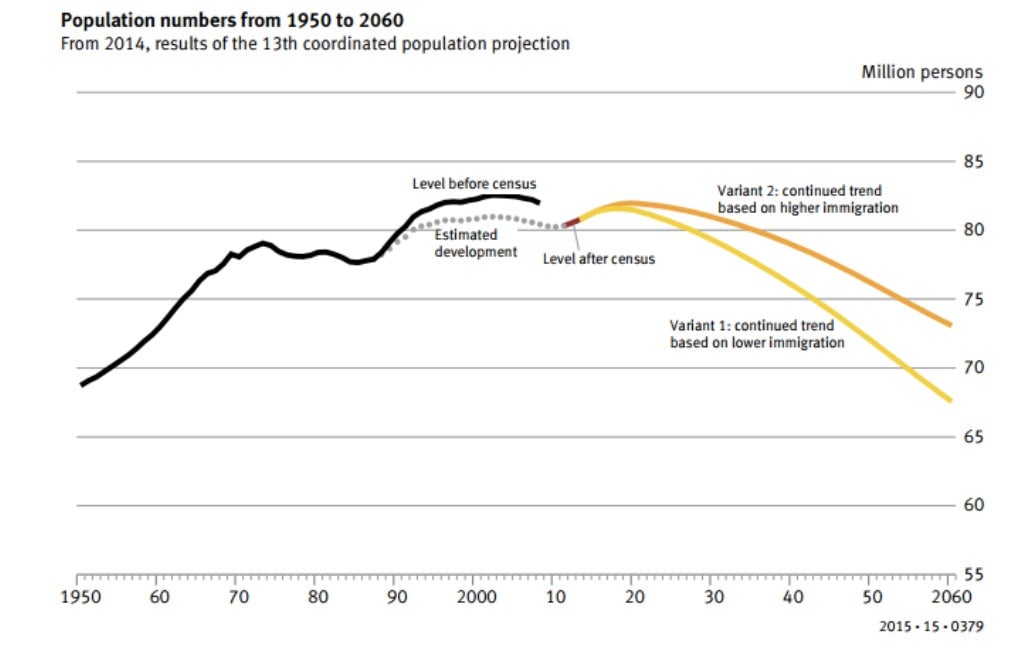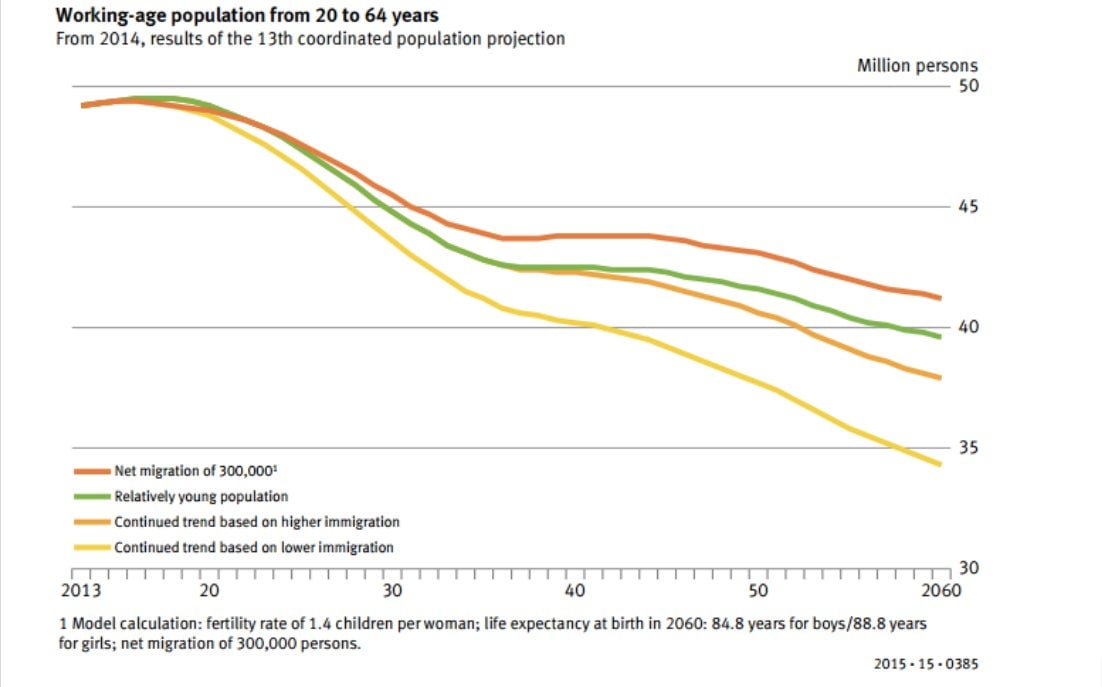Even all its refugees can’t help prevent Germany’s longterm population decline
As the main refuge for asylum-seekers in Europe today, Germany is facing a tremendous influx of new citizens—but paradoxically, economists say the country’s future is still threatened by underpopulation.


As the main refuge for asylum-seekers in Europe today, Germany is facing a tremendous influx of new citizens—but paradoxically, economists say the country’s future is still threatened by underpopulation.
First, though, the good news: Rising immigration is canceling out Germany’s declining birth rates, so the overall population has stopped shrinking and is holding steady at around 81 million people. Germany accepted 1.1 million migrants in 2015, five times as many as in 2014, and the majority of those people were “of working age,” according to the Guardian. With 43 million people employed and fewer than 2 million unemployed, according to new data from the national statistics office, Germany’s active workforce is now more robust than it’s been for decades.
In the short term, this growth of the working-age demographic is great, but without equal or greater growth of younger segments, the population will be in trouble again in a few years. That’s the bad news.
Just like Denmark, Japan, and many other developed nations, Germany gains fewer babies every year. The latest population projection from national statistics office DeStatis estimates that Germany’s total population in 2060 will be 73.1 million—even if it continues to accept more than 100,000 immigrants annually between now and then.

There may also be more old people relying on the labors of fewer young people than ever before.
